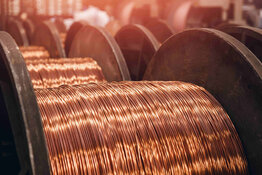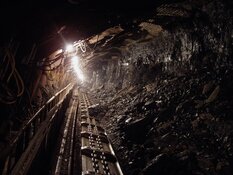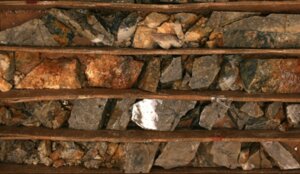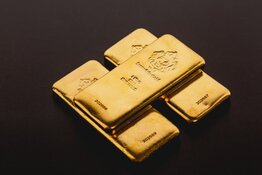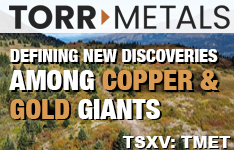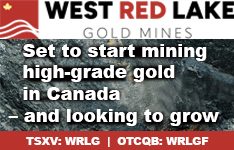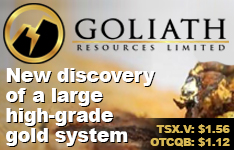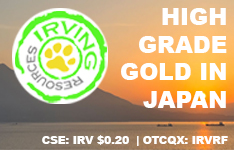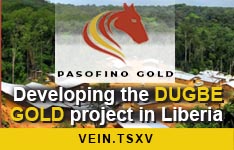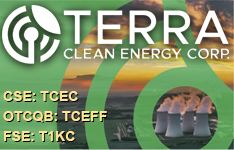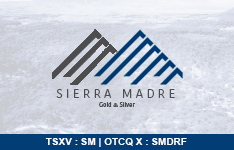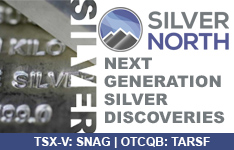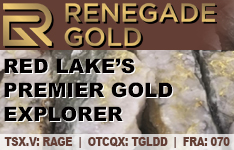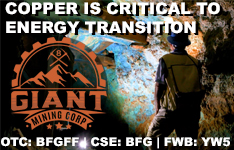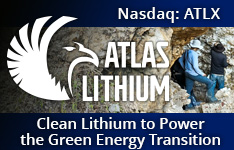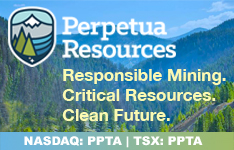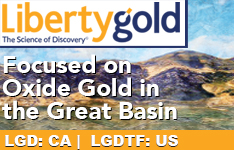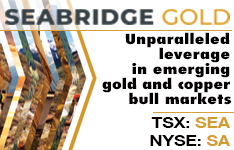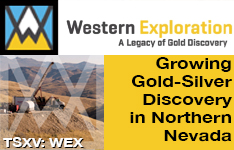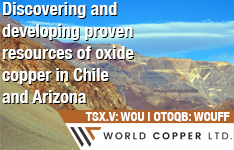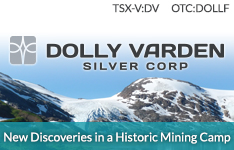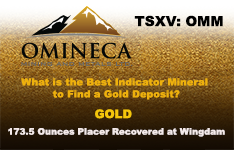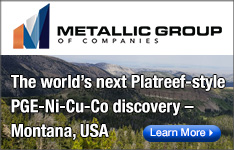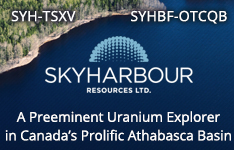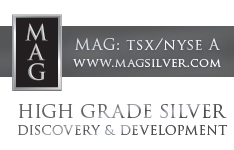The U.S. copper market experienced a notable price increase following the Trump administration's announcement of a 50% tariff on copper imports. The proposed measure, introduced during a Cabinet meeting on July 9, marked a key development in ongoing efforts to support domestic production of critical industrial materials. Copper futures responded by rising more than 10% overnight, reaching a new all-time high of US$5.682 per pound. According to The Guardian on June 9, the intraday peak touched US$5.8955, reflecting market adjustments to anticipated changes in U.S. supply dynamics. In contrast, global copper benchmarks saw slight declines as international markets assessed the potential implications for global trade flows.
Copper futures in the United States reacted swiftly, climbing more than 10% overnight to an all-time high of US$5.682 per pound. The Guardian article mentioned that the metal briefly spiked to US$5.8955 intraday on July 8, its sharpest single-day surge since 1989. The record-setting price movement came in response to both the tariff announcement and market anticipation that domestic copper supply would tighten rapidly. Meanwhile, prices on the London Metal Exchange fell by as much as 2.4%, reflecting fears that reduced U.S. demand could soften global trade.
According to a July 9 report from Yahoo! Finance, analysts said U.S. copper prices reached a 25% premium over global benchmarks. JPMorgan noted that importers had rushed to secure supply, with copper shipments into the U.S. over the past six months approaching a year's worth of typical volume. "The surging demand for U.S. copper ahead of the looming tariffs has pushed domestic prices to a 25% premium over copper trading on the London Metal Exchange (LME)," wrote Adam Turnquist, chief technical strategist at LPL Financial.
A report from Ahead of the Herd on July 14 described the tariff as an attempt to stimulate domestic smelting and refining — two major bottlenecks in the U.S. copper supply chain. The report noted that the U.S. only operated two smelters as of mid-2025, compared to China's approximately 200. Though the U.S. has ample copper reserves, refining and production remain insufficient to meet industrial demand, which spans sectors from automotive and construction to renewable energy.
Structural Constraints Highlight U.S. Import Dependence
In comments to BNN Bloomberg, Red Cloud Securities commodity strategist Ken Hoffman explained that the price increase was driven not only by policy but by structural demand. "You have every military in the world trying to increase budgets . . . and you've just added gas to the fire saying we're going to put these silly tariffs on copper," Hoffman said, adding that a declining U.S. dollar, down about 15% in 2025, exacerbated the cost of metal imports.
Copper's designation as a critical material in a February executive order intensified scrutiny of foreign dependence. The U.S. Geological Survey reported that more than 50% of U.S. refined copper consumption is met through imports, primarily from Chile, Canada, and Mexico. In 2024, the U.S. imported approximately 810,000 tonnes of refined copper while exporting just 60,000 tonnes.
Speaking to Forbes on July 8, Maximo Pacheco, chairman of Chilean copper producer Codelco, stated that the tariff's specifics remained unclear. Analysts from Bernstein noted ahead of the announcement that copper inventories were already shifting to U.S. warehouses in anticipation of the trade measures.
Domestic smelting capacity was widely viewed as inadequate. "The issue lies in the fact that we have three operating copper smelters in the entire country, which is pretty undersized for what we need," said Eric Saderholm, co-founder of American Pacific Mining, in Yahoo! Finance on July 9. Goldman Sachs added that the 50% tariff appeared to be more than a negotiating tactic. "We revise our baseline expectation to a 50% tariff on U.S. copper imports, up from 25% previously," the firm stated.
While scrap copper has been considered as a short-term alternative, the U.S. currently lacks the smelting infrastructure to process its growing backlog of scrap material. According to Bloomberg, calls have emerged to restrict exports of scrap instead of imposing tariffs on refined imports, in hopes of bolstering the domestic copper circuit.
Industry leaders have also voiced concerns about downstream effects. A July CBS News article cited economist Ryan Young of the Competitive Enterprise Institute, who warned that tariffs could significantly increase costs for utilities, manufacturers, and construction firms. Daan de Jonge of Benchmark Mineral Intelligence emphasized broader inflationary risks, noting that "a 50% price hike will have inevitable ripple effects on the cost of new infrastructure, the cost of housing, the cost of fridges, cars, air conditioning."
Copper demand has risen sharply in recent years, driven by clean energy adoption, data center construction, military rearmament, and electric vehicle (EV) proliferation. A 2024 report from Sprott indicated that copper demand from grid battery storage alone was expected to grow 557% by 2035. The International Energy Agency forecast copper needs from electricity networks would grow from 4.1 million tonnes in 2023 to 6.2 million tonnes by 2035. Meanwhile, global copper mine grades have continued to decline, down approximately 40% since 1991, according to BHP.
Although 2024 ended with a modest refined copper surplus of 301,000 tonnes, UBS forecasted that the market would swing into a deficit of over 200,000 tonnes in 2025. Tightening supply and increasing demand have created a landscape where price volatility is heightened and infrastructure stress is likely to mount.
As global copper demand continues to grow and trade policies reshape supply chains, several companies have positioned themselves to play a key role in meeting long-term market needs. With operations spanning exploration, development, and production, these firms are navigating the current landscape while contributing to the broader effort to strengthen domestic and regional copper supply. Below are three companies working within this evolving sector.
NevGold Corp.
NevGold Corp. (NAU:TSX.V; NAUFF:OTC; 5E50:FSE) has continued to report promising drill results from its Limousine Butte Project in Nevada, a property that may hold growing strategic importance as the U.S. seeks to strengthen domestic supplies of critical minerals.
 Streetwise Ownership Overview*
Streetwise Ownership Overview*
NevGold Corp. (NAU:TSX.V; NAUFF:OTC; 5E50:FSE)
In its most recent update, the company announced a high-grade oxide gold-antimony intercept of 9.68 g/t gold equivalent (AuEq) over 11.6 meters at the Resurrection Ridge zone, within a broader interval of 2.85 g/t AuEq over 60.3 meters. Other highlighted results include 1.55 g/t AuEq over 19.8 meters and 1.20 g/t AuEq over 33.9 meters. These oxide-dominant intercepts were calculated using metal prices of US$2,000/oz gold and US$35,000/tonne antimony.
The 2025 drill program is part of NevGold's effort to define a maiden gold-antimony mineral resource estimate by year-end. The company has already released results from more than 20 drillholes and plans to release results from an additional 30, along with metallurgical testing and a re-assay of 50 historical holes. The near-surface nature of the mineralization at Resurrection Ridge, currently showing over 800 meters of strike length, could support a potential starter pit scenario.
Limousine Butte's relevance increased after a March 2025 U.S. Executive Order elevated antimony to the list of critical minerals. With China, Russia, and Tajikistan dominating global supply — and with China recently imposing export restrictions — NevGold's Nevada project has attracted attention as a potential domestic alternative. Analysts have emphasized the project's oxide nature and its location within Carlin-style geological settings as contributing to both exploration potential and development feasibility.
A June 2025 report by Ivan Lo of The Equedia Weekly Letter described NevGold as a rare junior with high-grade oxide results and critical mineral exposure. He noted the Limousine Butte system already spans over five kilometers and cited intercepts such as 2.46 g/t AuEq over 86.9 meters and 13.15 g/t AuEq over 3.1 meters as evidence of scale and grade. Lo also pointed to the presence of antimony as a distinguishing factor that could align the project with U.S. supply chain priorities.
Institutional backing has further supported the company's advancement. NevGold completed a CA$6 million financing in May 2025 led by Clarus Securities. The deal was described as a sign of confidence from deep-pocketed investors with experience in early-stage mining opportunities. According to the company, it is fully financed to complete its 2025 exploration program, which includes a 5,000-meter reverse circulation drill campaign and metallurgical work on a 100-kilogram bulk sample.
NevGold's strategic investors include GoldMining Inc., which holds 28.3% of the company on an undiluted basis, and McEwen Mining Inc. The company said about 30% is held by management and insiders.
According to Refinitiv, these include Non-Executive Chairman Giulio T. Bonifacio with 4.56%, CEO Brandon Bonifacio with 3.46%, Independent Director Gregory French with 0.85%, and Independent Director Timothy Dyhr with 0.70%, Refinitiv said. About 10% is held by institutions, and the rest is in retail.
NevGold has 94.25 million outstanding shares and 57.25 million free-float traded shares. Its market cap is CA$28.33 million. Its 52-week trading range is CA$0.17 and CA$0.50 per share.
Coppernico Metals Inc.
Coppernico Metals Inc. (COPR:TSX; CPPMF:OTCQB; 9l3:FSE) has been advancing its flagship Sombrero Project in southern Peru, a district-scale opportunity to expand the prolific Andahuaylas-Yauri copper-gold belt — home to world-class mines like Las Bambas, Antapaccay, and Constancia.
 Streetwise Ownership Overview*
Streetwise Ownership Overview*
Coppernico Metals Inc. (COPR:TSX; CPPMF:OTCQB;9l3:FSE)
The company's extensive land position includes multiple high-priority targets with the scale and geological characteristics seen in major Andean copper systems.
Early 2025 results from Tipicancha, one of Sombrero's most compelling zones, returned promising surface values including 22 meters of 0.65% copper and 0.77 g/t silver, with higher-grade intervals. Surface work has expanded the mineralized footprint to over 2 kilometers, and geochemistry has revealed indicators commonly linked to porphyry systems at depth. The company has completed more than 8,000 meters of diamond drilling in its Phase 1 drill program and is currently seeking expanded permits to accelerate Phase 2 exploration. The Sombrero Project reflects a decade-long commitment to sustainable development and local collaboration, integrating agriculture and job creation in partnership with the Peruvian government.
Despite limited recent news flow, Coppernico has remained focused on advancing both permitting and geological modeling while identifying additional copper-gold targets across its land package. With multiple targets showing district-scale potential, Coppernico continues to position Sombrero as one of the most exciting exploration-stage copper projects in the Americas.
Analyst coverage has noted the project's scale and analogies to nearby major copper mines. In a May report, 3L Capital's Steven Therrien described Sombrero as having "large copper skarn deposit potential," citing Tipicancha's results and historical intercepts at the Fierrazo target, which included 90.4 meters of 0.48% copper and 116 meters of 0.42% copper. Other prospects, including Nioc and Chumpi, have returned strong sample results, with some historical grab samples from Nioc showing copper grades exceeding 4% and 9% alongside notable gold values.
According to Refinitiv, six strategic entities own 15.08% of Coppernico Metals. Teck Resources Ltd. (TECK:TSX; TECK:NYSE) with 9.9%, Newmont Corp. (NEM:NYSE) with 6.28%, Coppernico CEO Ivan Bebek with 3.69% and other Directors and Officers with 1.73%. Institutional ownership amounts to 17.75%, and the rest is in retail.
Coppernico has 177.3 million (M) outstanding shares and 150.56M free float traded shares. Its market cap is CA$35 million. Its 52-week range is CA$0.115–0.54 per share.
Hercules Metals Corp.
Hercules Metals Corp. (BADEF:OTCMKTS; BIG:TSXV) is advancing its flagship Hercules Copper Project in western Idaho, a historic mining district positioned within one of the most prospective belts in the western United States.
 Streetwise Ownership Overview*
Streetwise Ownership Overview*
Hercules Metals Corp. (BADEF:OTCMKTS;BIG:TSXV)
The project covers approximately 4,246 hectares and includes the historical Hercules Adit, which was part of a larger trend mined for high-grade silver in the early 1900s. The company is now leveraging modern exploration methods to define large-scale porphyry copper and skarn-style systems across multiple zones of mineralization.
The Hercules Copper Project is road-accessible and located within an emerging copper-silver corridor. Hercules Metals has identified over 10 kilometers of prospective strike length through mapping, rock sampling, and geophysical surveys. Historic work outlined high-grade zones including 5.5% copper and 1.4 g/t gold, with modern channel sampling and drilling confirming continuity and scale. These results, combined with multi-kilometer magnetic and IP anomalies, suggest the presence of a significant mineralized system at depth.
Initial drilling completed in 2023 and early 2024 returned encouraging results from shallow depths. Step-out holes expanded the mineralized footprint at multiple targets, with additional high-priority areas — including Grade Creek and Southern Flats — remaining largely untested. The company's 2025 exploration strategy includes over 12,000 meters of diamond drilling, designed to further delineate the copper-silver system and potentially support a maiden resource estimate.
Hercules Metals has also benefited from growing interest in U.S. domestic copper supply amid global electrification and critical mineral security concerns. The company emphasizes its alignment with U.S. strategic priorities, including the development of infrastructure-grade copper in a low-risk jurisdiction. Hercules believes its project may support both scale and grade necessary to supply clean energy and grid infrastructure demands.
The project's strong infrastructure, situated near roads, power, and a skilled workforce, adds to its development appeal. Additionally, Hercules holds 100% ownership of the project, offering operational flexibility and strategic optionality. The company is also pursuing partnerships and evaluating financing opportunities to accelerate exploration and resource development.
On June 25, Peter Krauth of Silver Stock Investor called early 2025 drill results from Hercules Metals "strong and encouraging," noting they validate the company's 3D geological model unveiled in April. "That's given them the confidence to boost the number of drill rigs from three to five," Krauth said, highlighting the company's aggressive push to define mineralization at its Leviathan porphyry copper target in Idaho.
Robert Sinn of Goldfinger Capital expressed optimism about Hercules Metals Corp.on July 14, highlighting its technical setup and recent exploration progress. "Hercules continues to fluctuate within what I have dubbed ‘The Big Beautiful Base,'" Sinn wrote, following the company's announcement of a large-scale geophysical survey over its Hercules Property in western Idaho. Investors are now watching closely for initial drill results from the 2025 program.
According to Refinitiv, 3.97% of Hercules Metals is owned by Institutions. Of those, Jupiter Asset Management Ltd owns the most with 8.76%, Commodity Discovery Fund owns 5.5%. Strategic investor, Barrick Gold Corp., owns 13.26%.
Management and Insiders hold 4.55%. CEO Chris Paul holds the most with 3.46% and Director Peter Simeon holds 1.07%.
Hercules Metals has a market cap of US$139.042M and a 52 week range of US$0.4600 - US$1.6200.
| Want to be the first to know about interesting Critical Metals and Copper investment ideas? Sign up to receive the FREE Streetwise Reports' newsletter. | Subscribe |
Important Disclosures:
- Coppernico is a billboard sponsor of Streetwise Reports and pays SWR a monthly sponsorship fee between US$4,000 and US$5,000.
- As of the date of this article, officers and/or employees of Streetwise Reports LLC (including members of their household) own securities of NevGold and Coppernico.
- James Guttman wrote this article for Streetwise Reports LLC and provides services to Streetwise Reports as an employee.
- This article does not constitute investment advice and is not a solicitation for any investment. Streetwise Reports does not render general or specific investment advice and the information on Streetwise Reports should not be considered a recommendation to buy or sell any security. Each reader is encouraged to consult with his or her personal financial adviser and perform their own comprehensive investment research. By opening this page, each reader accepts and agrees to Streetwise Reports' terms of use and full legal disclaimer. Streetwise Reports does not endorse or recommend the business, products, services or securities of any company.
For additional disclosures, please click here.


